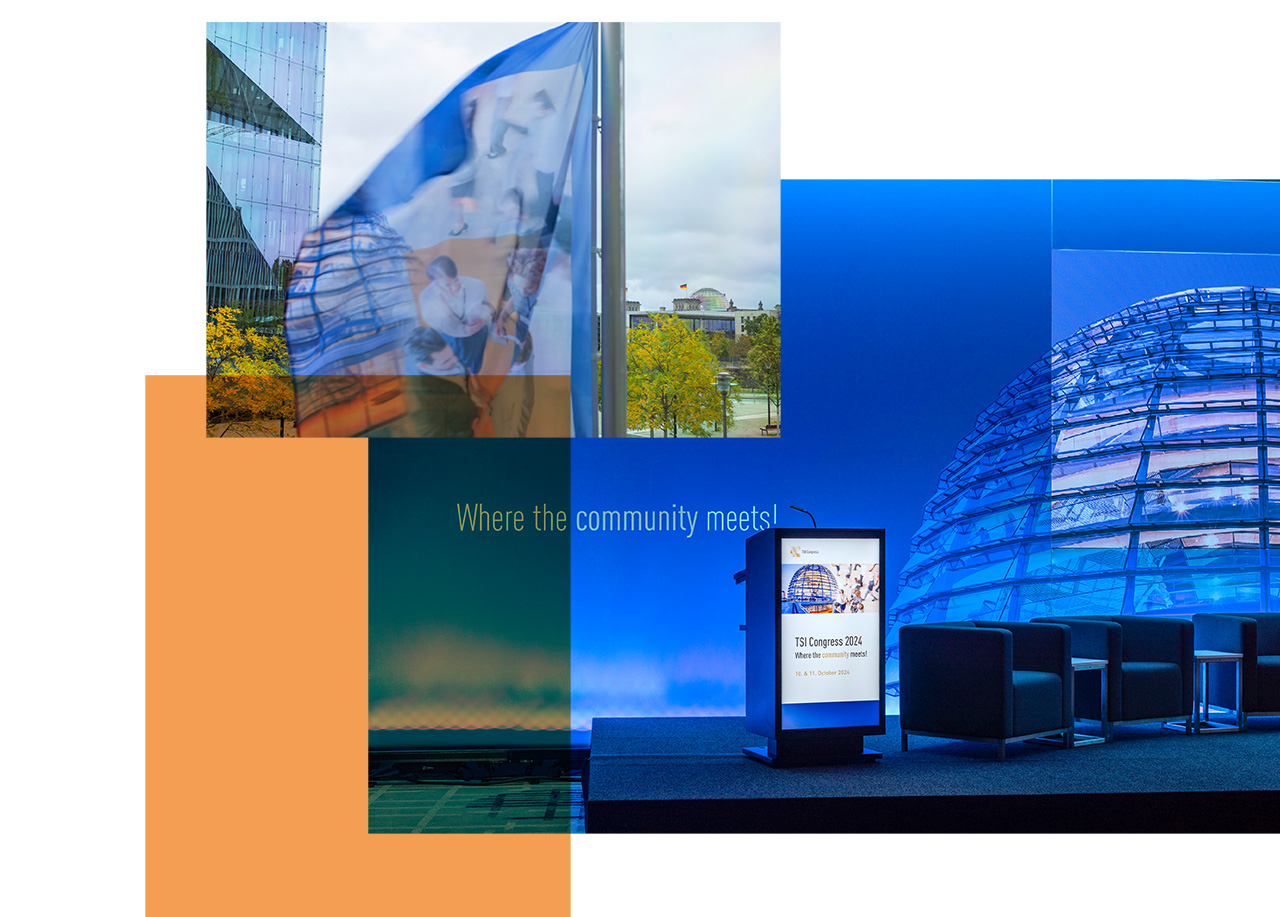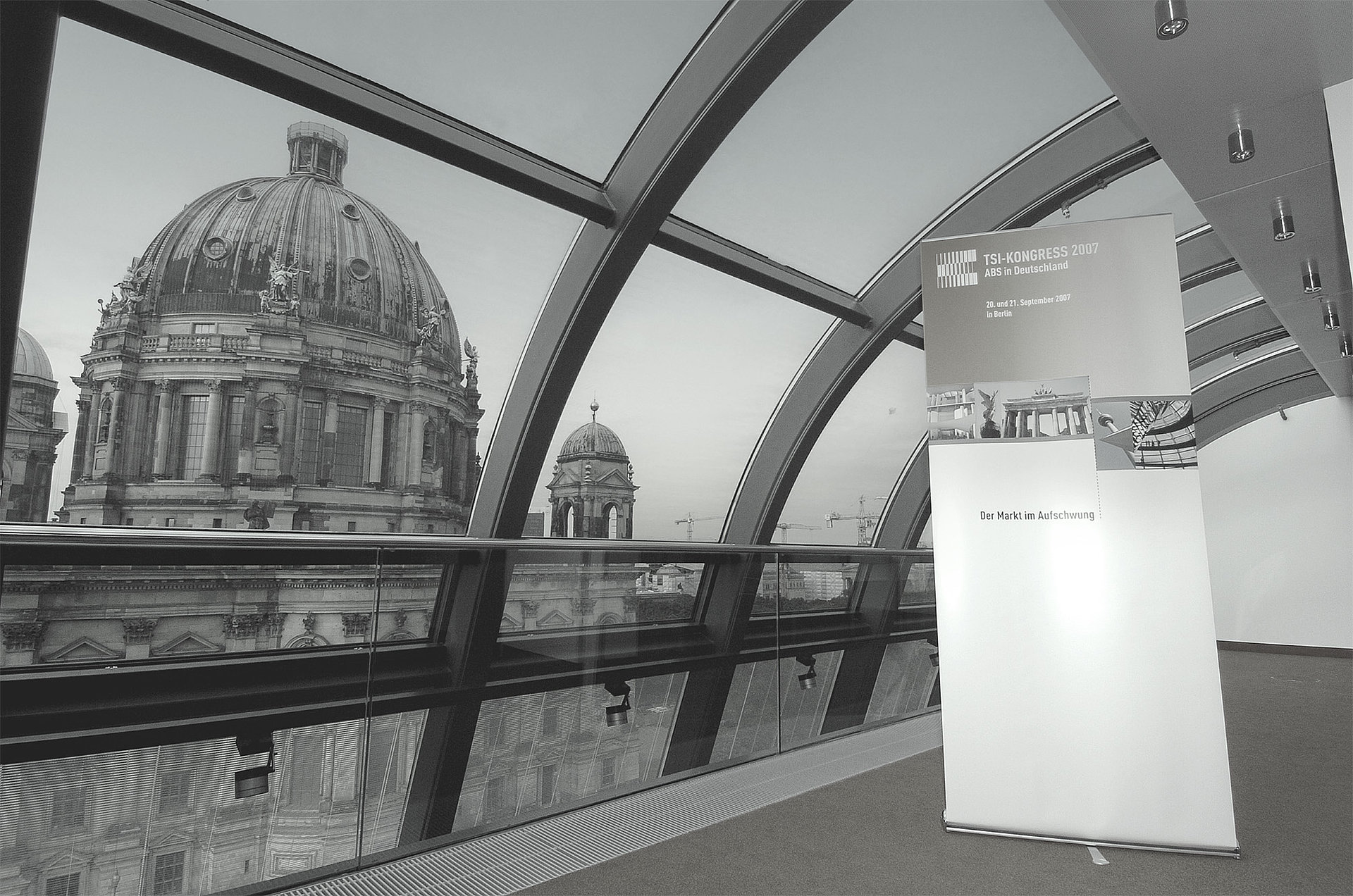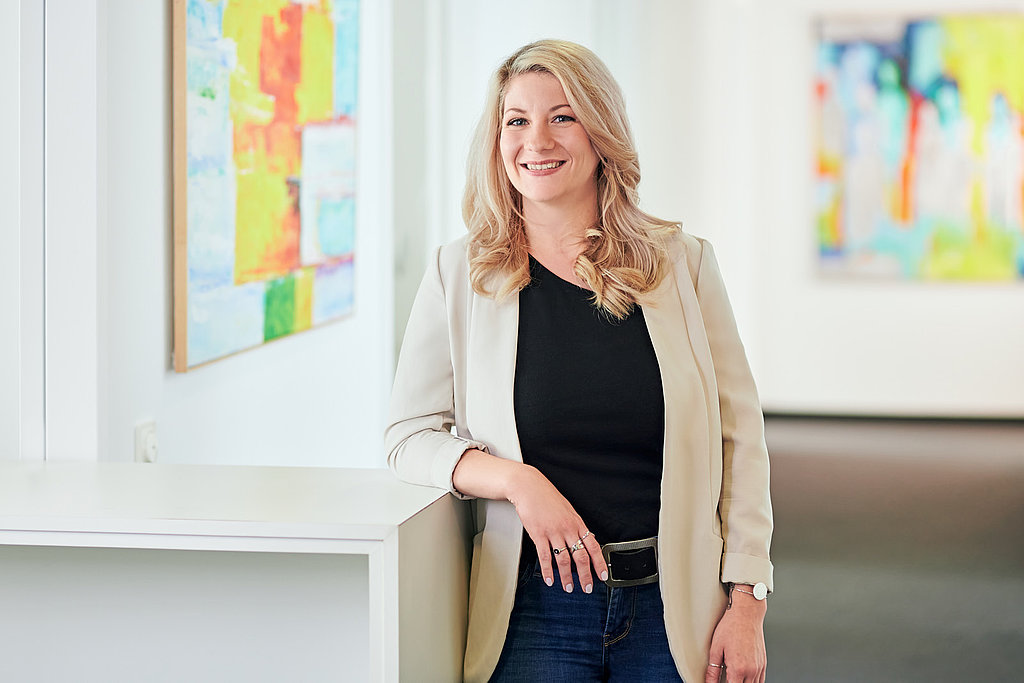History
The idea for the TSI Congress dates back to autumn 2006. Until then, there had been a German securitisation conference organised by a large American congress provider that gathered the German community in one of the major German cities once a year. But with the founding of TSI, which had been covering German securitisation topics since 2004, the question arose: why not offer a dialogue platform via TSI? The idea in autumn was followed by the first TSI Congress in Berlin at the end of September 2007. Why Berlin? As the German capital and seat of government, Berlin offered itself as a new point of contact for the securitisation community in order to build a bridge from the financial market in Frankfurt to policymakers and supervision in Berlin.
The topics
Asset-Based Finance in Germany and TSI - the two terms are closely linked. The TSI Congress thus covers both the traditional securitisation topics in the current context while always taking into account the macroeconomic environment and the related asset classes. In this way, it offers participants from the market side, government departments and supervision an exciting and comprehensive repertoire of topics. From concepts like Asset Based to discussions about the future of securitisation.
Who you meet at the TSI Congress
You meet specialists and managers, executives, partners and board members from the fields of credit and credit portfolio management, risk management, law and regulation, trading and treasury in banks. You can dialogue with specialists from law firms, auditing companies and rating agencies, from business service providers and management consulting firms. You also meet investors from Germany and abroad as well as CFOs and treasurers from major companies in the real economy.
This high-calibre network of the financial market is joined by many representatives from German business, government (Federal Ministry of Finance, Federal Ministry of Economics and Climate Action, Hessian Ministry of Finance), regulators from Germany (Deutsche Bundesbank, Federal Financial Supervisory Authority (BaFin)) and abroad (European Central Bank, European Banking Authority, European Securities and Markets Authority) as well as academics involved in the topic.
They all use the event as a platform for communication and professional exchange. The event is also supported by the leading associations of the real economy, such as
Event format
From its launch in 2007 until 2019, the annual TSI Congress was a purely face-to-face event, taking place each early autumn and bringing together approximately 650 participants and speakers onsite. During the COVID-19 pandemic, the TSI Congress was organised as a hybrid event, being held both onsite in Berlin and online at the same time. Since 2023, the TSI Congress has returned to being a purely physical event, consistently updating and evolving its event concept to stay at the forefront of the industry. In essence, it's an event that meets your expectations in terms of quality and execution.
Around 100 speakers have the opportunity to present themselves, their companies, and their specialist topics in approximately 25 discussion forums and workshops, expert panels, and lunch/breakfast events, which form the core of the TSI Congress. The topicality of the topics and the quality of the presentations and panel discussions are two of the pillars on which the success of the congress rests. In addition, a series of discussion forums organised as business events and the cultural programme offer plenty of time and opportunity for networking.
The official congress language on site is German, but English-language panels and workshops now take a share of a good 60-70 per cent.
Participant structure
Participants from abroad (e.g. from Austria, Belgium, France, Ireland, Italy, Luxembourg, the Netherlands, Poland, Switzerland, the United Kingdom and the USA) make up more than a quarter of the congress participants and speakers.
Around 15 per cent of participants come from the top management level (board members, managing directors, shareholders), while more than 50 per cent of participants come from the second and third management levels and are senior specialists and experts.
The proportion of investors/asset managers is around 5-10 per cent of participants.




